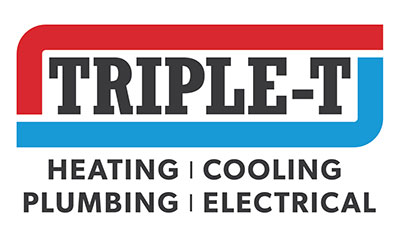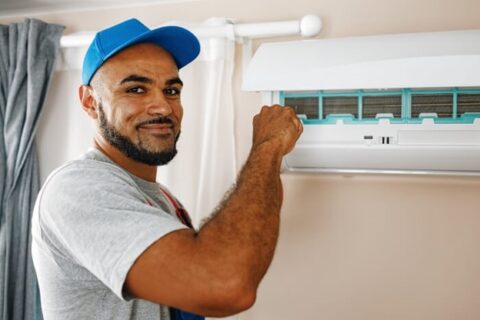Signs You Need to Replace Your Furnace
Deciding whether to replace your furnace is a significant decision that affects your home’s comfort, safety, and energy bills during the winter. Knowing when a replacement is necessary and what options are available can help you make an informed decision.
How Long Does a Furnace Last?
A typical gas-fired furnace usually lasts 20 to 30 years. However, start paying closer attention to its performance around the 15-year mark. Regular maintenance can extend a furnace’s lifespan, but it might be time to consider a replacement if you’re facing frequent repairs or significant issues.
Why Should You Replace Your Furnace?
You could always run your furnace until it fails completely, but then you’re left with a frantic emergency replacement. Heeding the signs that your furnace is giving out lets you enjoy the benefits of a new heating system sooner. Here’s why upgrading your furnace is a wise investment:
- Improved energy efficiency: New furnaces have higher efficiency ratings, so they use less fuel and reduce your energy bills.
- Enhanced heating performance: A new furnace provides more consistent and effective heating, eliminating cold spots and improving comfort.
- Lower repair costs: With a new furnace, you can expect fewer breakdowns, saving you money on future repairs.
- Increased home value: Upgrading to a modern, efficient heating system increases your home’s appeal and value if you decide to sell.
- Reduced carbon footprint: High-efficiency furnaces produce fewer greenhouse gases for a more environmentally friendly home.
- Safety improvements: Newer models have improved safety features that reduce the risks of carbon monoxide leaks and fire hazards.
- Compatibility with smart home technology: Modern furnaces can pair with smart thermostats and home automation systems, giving you better control over your home’s temperature and energy use.

Which Heating System Should You Choose?
There are more ways to heat your home than you might realize. Here are some of your options:
- Natural gas furnaces heat quickly and efficiently, even during the coldest weather. They run on inexpensive and widely available natural gas, though they do require ductwork and give off carbon emissions.
- Oil furnaces are less common due to the high cost of oil, but they can still be found in the northeastern United States.
- Electric furnaces have low installation costs but are more expensive to operate than gas and oil furnaces, making them suitable for areas with mild winters.
- Heat pumps are a great choice if electricity is your preferred or only energy source. They provide energy-efficient heating and cooling by transferring heat with electricity rather than burning fuel. A backup electric resistance heater makes heat pumps feasible even in extreme cold.
- Ductless mini-splits are ideal for homes without existing ductwork. They offer an efficient and customizable heating (and cooling) solution. Wall-mounted air handlers allow for temperature control in individual rooms, enhancing comfort and saving energy.
- Geothermal systems utilize the earth’s stable temperature to achieve unmatched heating and cooling efficiency. The initial installation cost is high, but the long-term energy savings are substantial.
How Much Does It Cost to Replace a Furnace?
Furnace replacement costs vary widely based on the type of furnace, the installation complexity, and your location. Expect the total cost of replacing a furnace to be a few thousand dollars, with electric furnaces at the low end of the spectrum and geothermal systems at the high end.
10 Signs You Need to Replace Your Furnace
Is your furnace over 15 years old? Start watching for these clues that it’s time for a new heater:
- Frequent repairs: If you constantly call for repairs, and each visit is more expensive than the last, it’s a clear sign your furnace is nearing the end of its lifespan. Frequent breakdowns indicate underlying issues that are often not economical to fix in older units.
- Unusual noises: A banging, whirring, popping, or rattling furnace signifies mechanical problems, from a loose belt to a failing motor. Sometimes, the problem is beyond repair.
- Strange smells: Persistent musty, burning, or electrical odors every time the furnace runs might indicate moldy ductwork insulation or shorted-out electrical wiring. Turn off your furnace and contact a technician for advice.
- Dust, soot, or rust particles: Particle matter around the furnace or near supply registers indicates that the furnace is no longer burning fuel efficiently. This affects indoor air quality and may threaten your family’s health, so don’t ignore it.
- Short cycling: If your furnace turns on and off more frequently than it should, it’s not operating properly. Short cycling may stem from a faulty thermostat, failing heat exchanger, or improper circulation.
- Cracked heat exchanger: This component transfers heat from the fuel source to the air. A cracked heat exchanger releases carbon monoxide into your home, a serious safety issue that often warrants a furnace replacement.
- Increased heating costs: If your utility bills are rising despite your usage staying the same, the furnace could be losing efficiency. Older furnaces work harder to heat your home, resulting in higher bills.
- Uneven heating: When some rooms are too hot while others are too cold, it means your furnace may lack the capacity to distribute air evenly. This problem often worsens as a furnace ages.
- Visible corrosion: Physical signs of deterioration, such as corrosion on the furnace itself, are clear indicators of aging. If not addressed, more serious problems like gas leaks or structural failures may occur.
- Air quality issues: If you or your family members experience more allergies, asthma symptoms, or other respiratory problems at home, your old, inefficient furnace could be to blame. Newer models filter out allergens and pollutants better for improved indoor air quality.
Choose Triple T Heating, Cooling, Plumbing & Electrical
Have you decided it’s time to replace your furnace? Triple T is here to help. Our family-run business has 50 years of experience treating customers with honesty, integrity, and respect. We stay up-to-date with the latest technology, so we can recommend the right heater replacement based on your specific needs. To request a furnace installation estimate, please contact us at 801-798-7711 if you live in Utah County or 435-275-4011 if you’re a Washington County resident.


